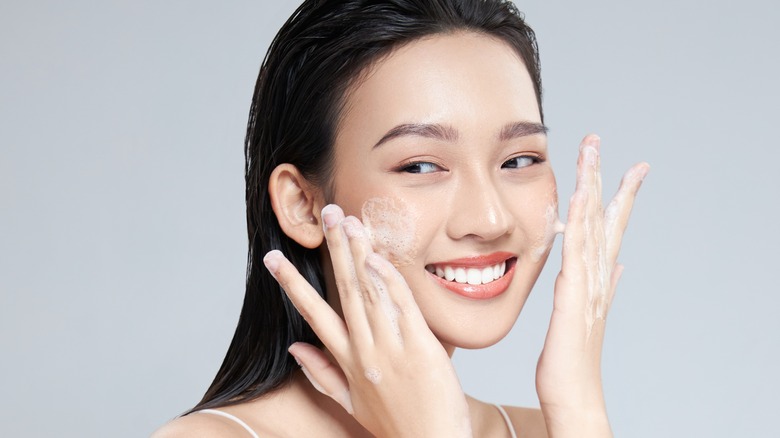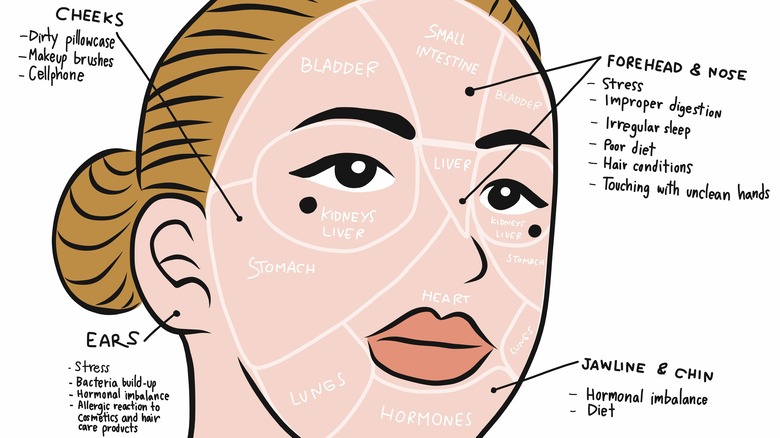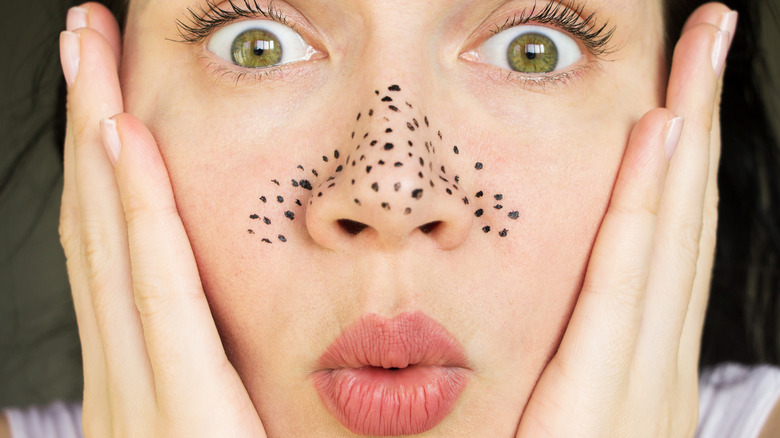What Face Mapping Can Tell You About Your Health
When it comes to diagnosing and treating diseases, Western and Eastern medicines are like chalk and cheese. According to the National University Of Health Sciences, Western medicine is all about reactive care, while Eastern medicine is more about preventative care. The former deals with problems as they arise, zoning in on the symptoms and depending heavily on pharmaceuticals. Meanwhile, the latter believes in digging deep to find the root cause and treat it long-term using herbal products, diets, and self-practice exercises.
Take acne as a case in point. When you visit an Eastern medicine specialist, you'll not be given retinol or topical antibiotics for your symptoms. Instead, the specialist will give you a low-down on your overall health based on the method of face mapping and prescribe you some herbal medicine for your guts and advice on dietary changes. No blood tests, scanning, or fancy facials are needed. This approach, as far-fetched as it may sound, is predicated on the tenet that what shows on your face mirrors what's happening in your body and that skin disorders are caused by malfunctioning connective organs — which must be fixed before the skin can improve. "Face mapping goes back thousands of years," traditional medicine specialist Danial Hsu tells Byrdie, adding that lots of this holdover results from clinical experience. So, how can we tell which specific area of our face is linked to an inner organ, and how can we use that to our advantage? Here's what we know so far.
Face mapping for the upper face
Chinese scholar and co-founder of the skincare line Baszicare Chapman Lee tells Refinery29: "Face mapping is the ability to see the reflection of the body's organs on each part of the face by observing the face's complexion — such as luster, dullness, and color [and breakouts!] — as well as the tongue and face expression." If you're breaking out in solid red bumps across the forehead area, chances are you're under a lot of stress or not having enough sleep. The forehead is associated with the nervous and digestive systems, so repressed emotions or anger can cause acne to form on your T-zone. Prescription? Perhaps more breathwork practices to calm your nerves and swapping junk food and soda for kombucha or turmeric milk.
If zits and pimples pop up in the area between the eyebrows or on your temples, you might be having some liver issues, which might improve by the elimination of processed food, alcohol, and smoking. Excessive consumption of alcohol can make your liver overloaded with toxins, leading to a variety of skin irritations, including adult acne. Breakouts on the cheeks are usually associated with dysfunction of the stomach, liver, lungs, and respiratory system, says Dr. Axe. Increased intake of kale, celery, or cucumber juice accompanied by a short tai chi or yoga exercise every morning is recommended. You might also want to change your pillowcase and sanitize your cell phone every day to prevent dirt and bacteria from latching onto your cheeks.
Breakouts on the lower face explained
Per Health Wise Chinese Med, nose acne is typically a result of imbalances of the small intestine — part of the gastrointestinal tract that is responsible for most of the absorption and digestion of food. A reddened nose is also indicative of heightened blood pressure and cholesterol issues. To keep your digestive tract running smoothly, switch from cold beverages to warm drinks and cut down on saturated fat and pungent food. Hormones are the main culprit behind the blemishes on your jaw and chin, dermatologist Dr. Amanda Doyle tells Health. An imbalance in your reproductive organs or the digestive system can also cause chin and jawline flare-ups. Breakouts around the lip and mouth area are also linked with hormonal imbalances. A fiber-rich, low-GI diet including broccoli, green tea, whole grains, pumpkin seeds, and blueberries might be helpful. If you want a quick fix, birth control pills are a good shout.
Although face mapping claims to treat the root cause of skin issues internally, this method might not work for everyone — given the lack of clinical evidence and testability. One might question the validity of face mapping, but since it has been around for centuries, there must be some truth to it. Besides, face mapping and pharmaceutical treatment are not mutually exclusive, so you can use both for your own benefit with expert advice. If you want a precise diagnosis and a scientific-based treatment plan for your skin condition, you might want to speak to a dermatologist.


